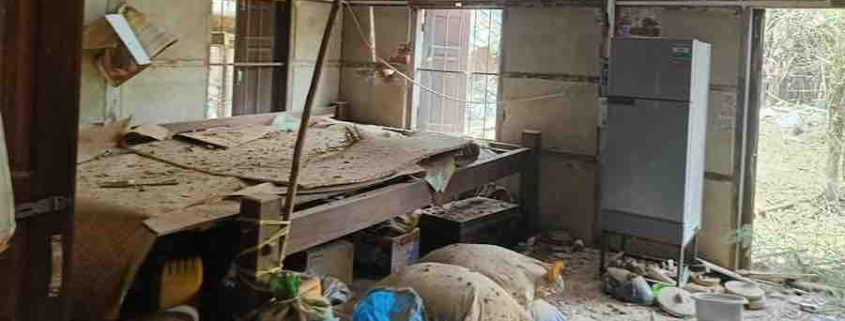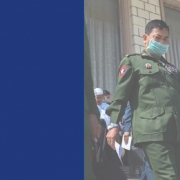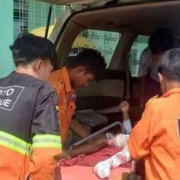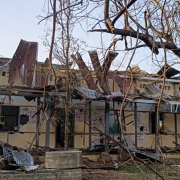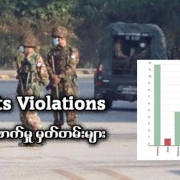Investigators document 80 air attack incidents since Myanmar earthquake, despite junta ceasefire
One month on from the devastating earthquake in Myanmar, investigators at the Centre for Information Resilience (CIR) Myanmar Witness project have documented 80 air attack incidents across multiple regions, despite a temporary ceasefire declared by the Myanmar junta or State Administration Council (SAC) on 2 April 2025. The incidents documented include both potential airstrikes and paramotor attacks – aerial attacks involving small motorised paragliders.
The 7.7 magnitude earthquake struck Myanmar on 28 March, causing severe damage to homes and infrastructure and reportedly affecting more than two million people. Analysis carried out by Myanmar Witness at the time documented how the SAC continued its attacks in the emergency-declared areas of Myanmar following the natural disaster, with one incident reportedly occurring just minutes after the earthquake struck.
Attacks continued in the seven-day mourning period announced by the SAC between 31 March and 6 April, and following the ceasefire declaration. The Myanmar Air Force (MAF) is the only actor in the conflict with access and capacity to use aircraft capable of carrying out an airstrike.
Between 28 March and 24 April, 80 air attack incidents were logged by Myanmar Witness. Incidents range in severity and vary in terms of levels of confidence. Not all have been fully confirmed or geolocated due to a lack of open source material.
Of these, 65 events were recorded following the ceasefire declaration on 2 April. Incidents took place across 12 different states and regions, indicating the wide geographical scope of the military operations. 51 townships were impacted.
The states with the highest number of documented incidents were Sagaing (24), Mandalay (14), and Chin and Kayin (8 each).
Notably, several incidents assessed as likely airstrikes or heavy weapon attacks took place between 31 March 2025 and 1 April 2025, during the national mourning period and just hours before the SAC’s ceasefire began. These include the bombing of Indaw Myoma Monastery, Sagaing, on 1 April, and on the same day, the bombing of Loi Hkwin village in Shan State.
Three separate airstrike incidents were documented on 9 April 2025 in Sagaing Region and Chin State. These reportedly resulted in dozens of civilian casualties, including women and children, and significant infrastructure damage.
Nan Khan village tract, in Wuntho, Sagaing, was reportedly hit twice on 9 April – first at approximately 15:00 and again at around 18:00 local time. Over 20 civilians, including children, were reportedly killed, although the exact number remains unconfirmed at the time of writing. User-generated content (UGC) of the damage areas – which Myanmar Witness cross-referenced with satellite imagery – is consistent with reports of the two separate airstrikes occurring on the same day.
Robert Dolan, Myanmar Witness project director, said: “Myanmar’s population was already on its knees after years of SAC aggression and armed conflict. The layers of suffering are hard to comprehend – we’ve seen regions wrecked by war and then the earthquake, only to sustain further damage from continued airstrikes.
“The open-source data we’ve compiled – and the scale of the incidents documented – raise serious doubts about the SAC’s sincerity in declaring a ceasefire in the first place, and highlight what appears to be a complete disregard for civilian lives at a time when communities are already so vulnerable.”
An FCDO Spokesperson said: “We are appalled to see this evidence of ongoing airstrikes by the military regime during their ceasefire and at a time of national disaster.
“All attacks on civilians must stop now. Once again, we call for all actors to protect civilians in Myanmar, for unimpeded humanitarian access, and for the military regime to uphold the ASEAN Five Point Consensus, which remains critical in finding a path to peace in Myanmar.”
To carry out the analysis, Myanmar Witness gathered UGC from social media and news outlets, triangulating images and videos with satellite imagery where possible. The documented air attack incidents have been published today in an interactive, open-source map on the CIR website, though publication of the full dataset is ongoing.
Several incidents, especially from the post-ceasefire period, remain unconfirmed or categorised as low confidence due to the absence of verifiable UGC. This is partly due to an apparent rise in reporting delays, where information surfaces several days after an incident.
Since the 2021 military coup, internet access has been heavily restricted in regions such as Chin, Kayah and Sagaing, where armed clashes, potential human rights abuses, and earthquake-related displacement are ongoing. Such connectivity issues continue to hinder the availability of timely and reliable reporting from the ground. Myanmar Witness continues to monitor the situation.

